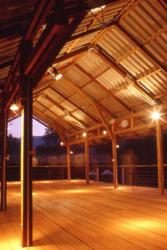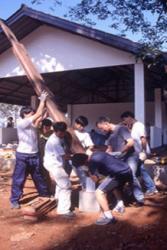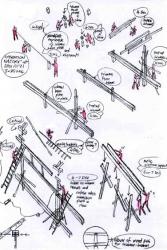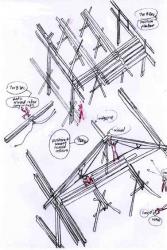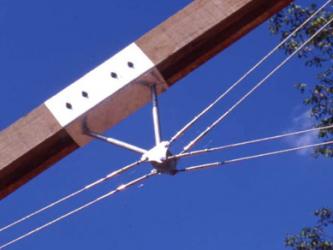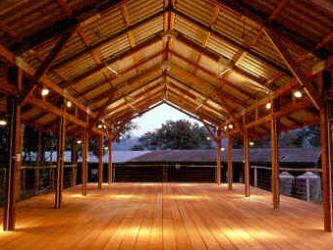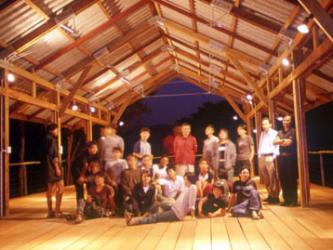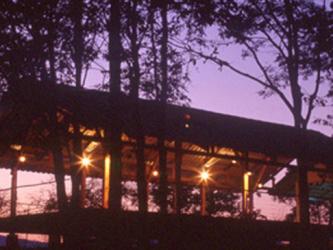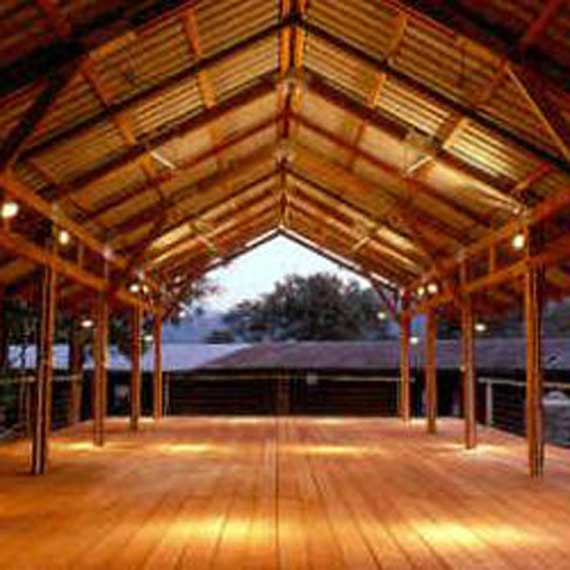In architecture courses, the bridging of design learning and construction is a constant challenge for educators. In exploring effective vehicles for learning, the consideration of problems related to integrating two modes of thinking: one which involves the use of hands, tools and machines in constructing buildings and the other which involves the design drawings of the buildings in response to aesthetic, cultural, functional and climatic issues. In December 2000, Joseph led a team of NUS architecture students in a community project to build a school hall in Ban Patai, near Chiang Rai (Thailand), with the help of one Construction Industry Training Institute trainer. The school was identified by the Singapore International Foundation as one of several needy cases operating on limited funds, educating 273 Lahu tribe children in a remote and beautiful part of the Golden Triangle.
The single storey timber structure was constructed by 20 students in twelve days for use as a canteen and hall to serve the village school children. It measures 15m x 9m and has a clear span of 6m and is open-sided for maximum ventilation. North Thailand has extreme temperature variations with seasonal monsoons. The children walk off the laterite school compounds, barefooted into the classroom and as such, the finish of the canteen structure was designed to accommodate this form of robust usage. There were three kinds of hardwood used, and these could be identified as chengal, balau and kerning. The natural colour of the timber is set off with halogen floodlights brought up from Singapore. The hardwood was sourced locally whilst steel connectors were fabricated in Singapore and trucked on site by a forwarding company.
The structure was designed to be fabricated by teams of students working with portable electric tools. As such, the built-up columns were made out of three separate pieces timber bolted together along its length and the roof truss was conceived as sandwiched rafters with stainless steel tension members to obviate the use of timber members in the lower chords acting primarily in tension. This improved the appearance of the interior space and the tension members were connected to the timber pieces with galvanised metal steel plates to form five rigid structural trusses which were in then supported by a vierendeel beam on the top of two rows of columns. The vierendeel beam created stability for the structural frame in the longitudinal bay and this obviated the need for diagonal cross bracing in one bay, which would have interfered with the use of the space by large groups of children. The floor is made out of a suspended timber deck with one inch thick floor boards in teak and in chengal (the local supply on site could not supply enough of floor boards in one type of hardwood). The difference was not noticeable as the pieces were scattered on the laying, so as to avoid the accumulation of one timber type in one entire part of the floor. This in turn created an interesting colour on the floor plane, which was supported of concrete pad footings, built one week before the team arrived on site. The roof is finished in corrugated sheets as this was the available roofing material to match the existing reinforced concrete structure from which the students’ building extended.
Citation
Ban Patai Village School Hall project won the only Honourable Mention in the Overseas Projects Category dominated by country clubs, resorts and shopping centers, at the 6th Singapore Institute of Architects Design Awards 2001. The jury was moved by the honest and functional building which imparted a sense of dignity to the village school. The spirit of volunteerism and conviction which underscored the process was highly commended.
About the Award
Held once every 3 years, the Singapore Institute of Architecture Architectural Design Awards’ intent is to recognise the efforts of SIA member firms in innovating architectural solutions and demonstrating exemplary designs. The event is aimed at encouraging the appreciation and patronage of good architectural design both within and without the construction industry. In the Overseas Category, there were nine entries. The jury gave only one award in this category, that is an Honourable Mention for Ban Patai Village School.
